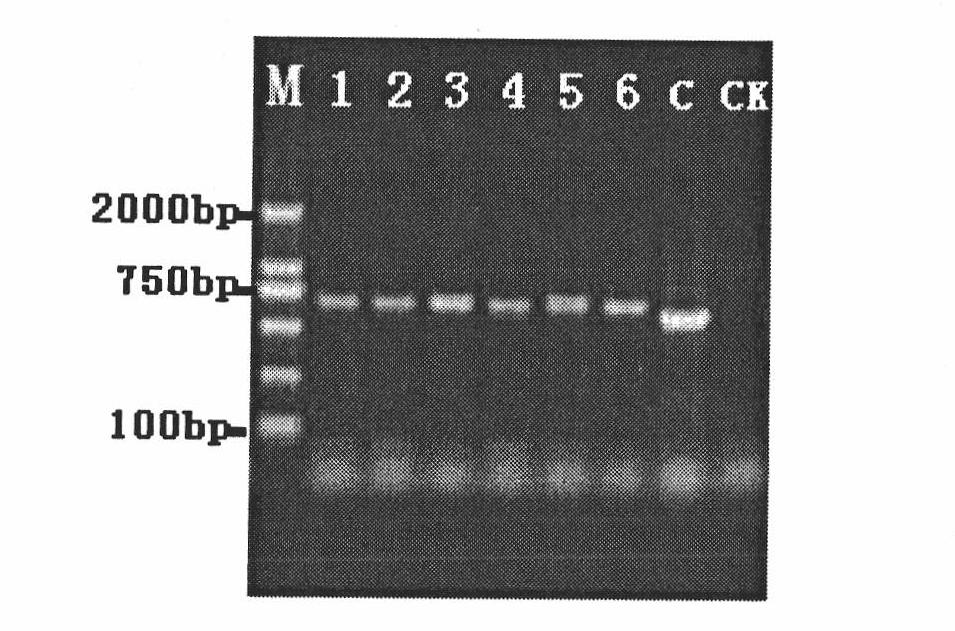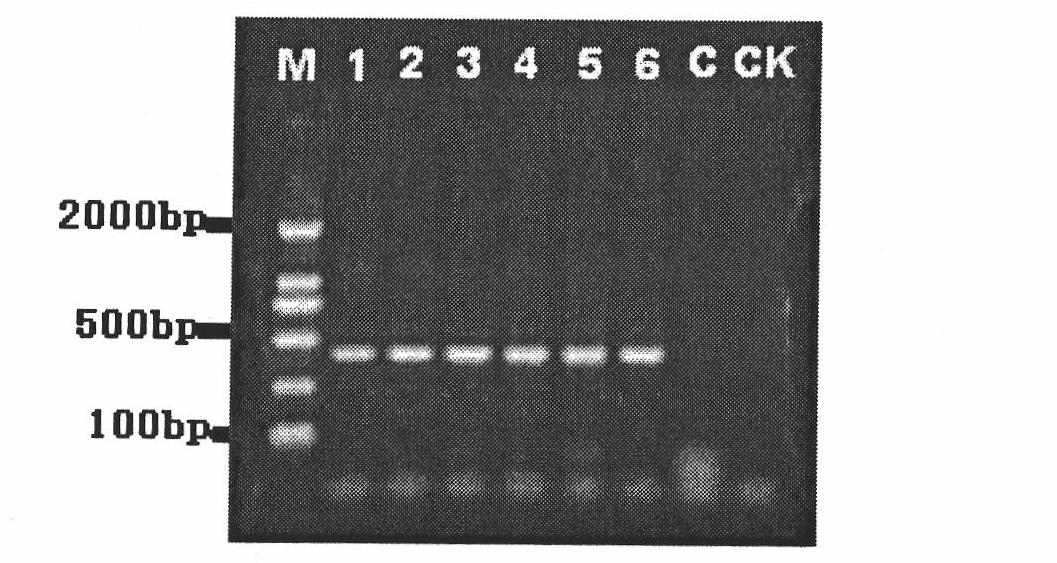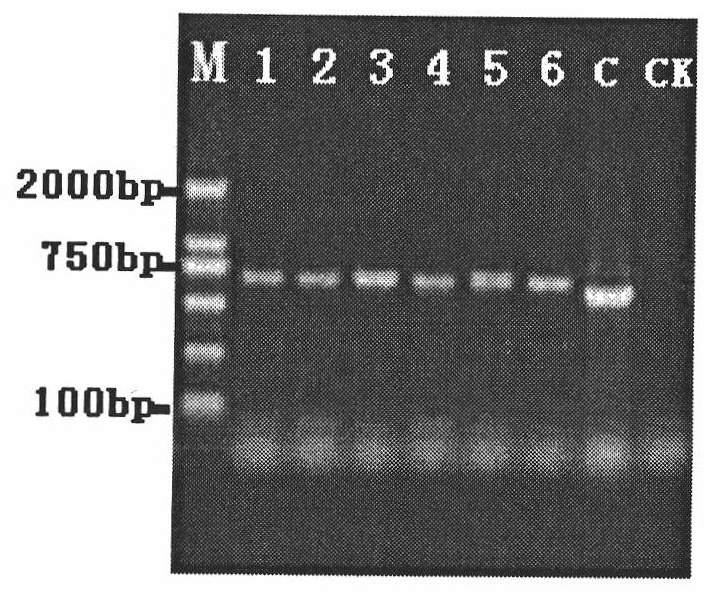Method for quickly and efficiently extracting deoxyribonucleic acid (DNA) of wheat stripe rust directly from infected wheat leaf blades
A wheat stripe rust and leaf technology, applied in the field of plant protection, can solve the problems of cumbersome operation steps, time-consuming and laborious, cumbersome extraction of genomic DNA, etc.
- Summary
- Abstract
- Description
- Claims
- Application Information
AI Technical Summary
Problems solved by technology
Method used
Image
Examples
Embodiment Construction
[0009] The present invention will be described in detail below in conjunction with specific embodiments.
[0010] A method for efficiently and rapidly extracting wheat stripe rust DNA directly from susceptible wheat leaves:
[0011] Dissolve 20 g of chelex-100 in 100 mL of sterilized double distilled water to prepare a 20% chelex-100 suspension for use. After mixing thoroughly, pipette 20 μl of the prepared chelex-100 suspension into a 100 μl PCR tube, pipette 5 μl of the Chelex-100 supernatant on the leaves of wheat stripe rust uredospores, and drip Chelex- 100 supernatant on the lesions and repeatedly smeared the leaves several times, washed the rust spores, sucked back the Chelex-100 supernatant containing the rust spores on the leaves and added it to the tank containing 20 μl 20% chelex-100 suspension. In the PCR tube, use a pipette to repeatedly absorb and mix well, put it in a boiling water bath for 2 minutes, then place it on a vortex mixer and shake and mix for 10 sec...
PUM
 Login to View More
Login to View More Abstract
Description
Claims
Application Information
 Login to View More
Login to View More - R&D
- Intellectual Property
- Life Sciences
- Materials
- Tech Scout
- Unparalleled Data Quality
- Higher Quality Content
- 60% Fewer Hallucinations
Browse by: Latest US Patents, China's latest patents, Technical Efficacy Thesaurus, Application Domain, Technology Topic, Popular Technical Reports.
© 2025 PatSnap. All rights reserved.Legal|Privacy policy|Modern Slavery Act Transparency Statement|Sitemap|About US| Contact US: help@patsnap.com



